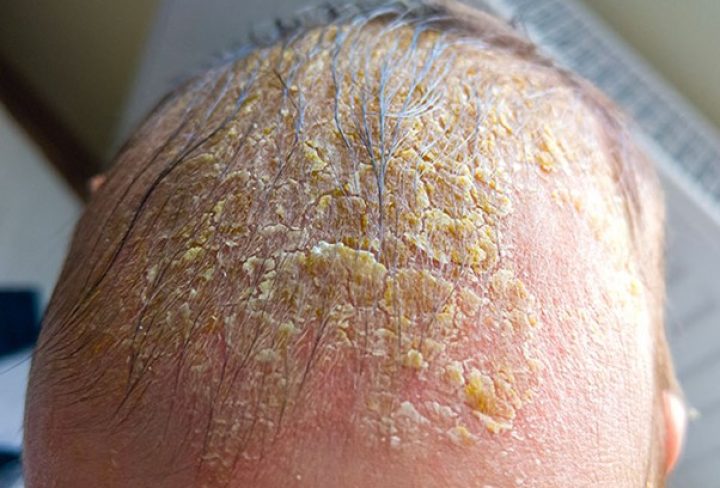Introduction:
Cradle cap, also known as seborrheic dermatitis, is a common condition that affects many babies within their first few weeks of life. Characterized by greasy, thick, crusty, or flaky scales on the scalp, forehead, eyebrows, or ears, cradle cap can be a cause for concern for new parents. However, it’s essential to know that cradle cap is harmless, not contagious, and typically not a sign of infection, allergy, or eczema. In this comprehensive guide, we’ll delve into what causes cradle cap, how to effectively manage it, and when to seek medical attention.
Understanding Cradle Cap:
Cradle cap may appear alarming, with its yellow, white, or brown scales and slightly reddened skin, but rest assured, it’s a harmless condition. Unlike what many parents might think, cradle cap isn’t merely dry skin. Instead, it consists of flakes of dead skin that have clumped together with the natural oils produced by your baby’s pores. These scales are akin to postage stickers, firmly adhered to the scalp. Removing them involves a process of gently loosening and washing them away.
Getting Rid of Cradle Cap:
Addressing cradle cap is a straightforward process, and it typically disappears within one to two weeks once you’ve taken the necessary steps. Here’s a step-by-step guide on how to manage and eliminate cradle cap effectively:
Massage Oil into Your Baby’s Scalp: Start by applying a natural oil like coconut oil or cocoa butter to your baby’s scalp. These oils are gentle and readily available in stores. The oil will work to soften and dissolve the cradle cap, making it easier to remove.
Let it Sit: Allow the oil to sit on the affected area for a few minutes. This gives it ample time to penetrate and loosen the scales, allowing the dead skin to “float up” off the scalp.
Apply a Mild Baby Shampoo: After the oil has had its effect, use a mild baby shampoo to wash your baby’s hair. This step is crucial in removing excess oil and debris from the scalp.
Gently Scrub: While the shampoo is still in place, use a gentle baby brush or a soft-bristled toothbrush to carefully free the dead skin. Avoid picking or scratching, as this could irritate your baby’s sensitive skin.
Rinse Thoroughly: Rinse your baby’s scalp thoroughly with water. As you do this, say goodbye to cradle cap, as the unwanted flakes and suds wash away down the drain.
Dandruff Shampoo as a Last Resort: If the above steps do not entirely eliminate the cradle cap, consult your doctor about using an anti-dandruff shampoo or cortisone lotion. However, these should be the last resort, as they can potentially irritate your baby’s delicate skin.
Cradle Cap on Other Body Parts:
In some instances, cradle cap may extend beyond the scalp and affect areas like your baby’s bottom. It might be mistaken for diaper rash. To address this, follow standard diaper rash treatment guidelines, such as keeping the skin clean and dry, using plain water or mild wipes, and applying a gentle diaper cream or lotion. If you’re uncertain whether it’s cradle cap or diaper rash, consult your pediatrician for guidance.
Preventing Cradle Cap:
While you can’t entirely prevent cradle cap, you can take steps to minimize its occurrence. Avoid applying additional oil to your baby’s scalp as a preventative measure, as excess oil contributes to the condition. Instead, establish a routine of regular hair and face washing to prevent the buildup of excess oils. Be sure to clean around the eyebrows and the sensitive soft spot gently but thoroughly.
When to Consult a Doctor:
In most cases, cradle cap can be managed effectively at home. However, there are situations when you should seek medical advice:
If cradle cap appears all over your baby’s body.
If your baby’s scalp looks swollen or inflamed.
If you notice that the crust from cradle cap is leaking fluid or bleeding.
If the home treatment methods aren’t yielding results and the condition persists.
Conclusion:
Cradle cap, while unsettling in appearance, is a common and harmless condition in babies. By understanding its causes and following the recommended steps for management, you can effectively alleviate cradle cap within a matter of weeks. Always remember to consult your doctor if you have concerns about your baby’s skin or if home treatment proves ineffective.

